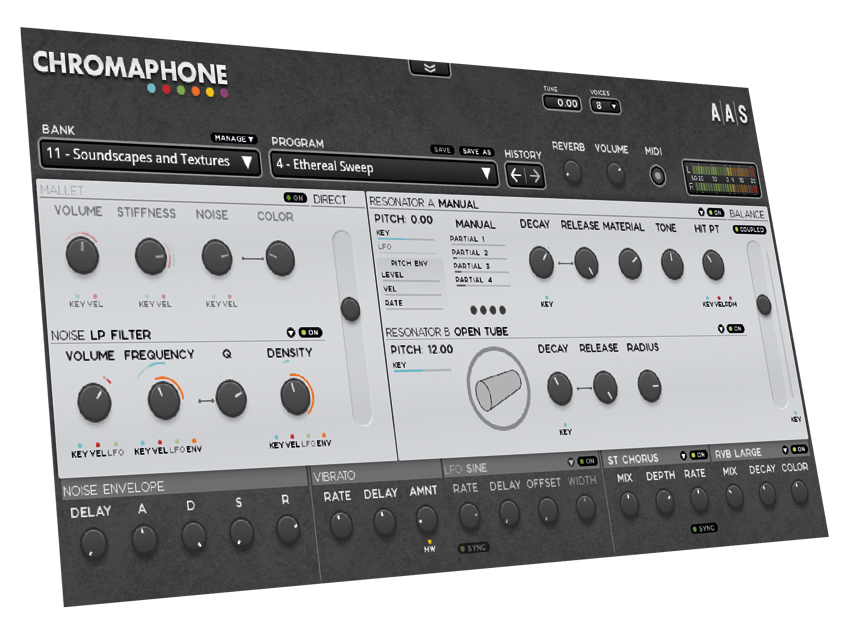MusicRadar Verdict
AAS's refined approach to acoustic percussion can bring a vibrant colour to your sound palate.
Pros
- +
Intriguing range of sounds; user-friendly design; ultra light install footprint.
Cons
- -
Very little.
MusicRadar's got your back
Originally produced as Ableton's Collision synth, the Canadian software wizards at Applied Acoustics Systems have now refined their initial efforts to create Chromaphone - a plug-in that delivers the sound of pitched percussion and other acoustic-coloured instruments.
Chromaphone's straightforward interface quickly brings users visually more in touch with what's going on with the instrument than its predecessor did. Split across two main panels you get to choose mallet parameters and filtering on the left, and the characteristics for two resonators (string, membrane, tube, etc…) on the right.
"Chromaphone has no trouble coming up with rich and exceptional sounding textures."
AAS has enhanced the sonic relationship between those resonators via its new 'coupling technology'. Apart from being able to model the sounds that one resonator makes when being fed into another, Chromaphone can also replicate how both resonators would react as they transfer energy back and forth from one another after they've been struck.
This bi-directional interaction in essence creates a new object and a wide range of new sound possibilities.
Bangin' around
AAS has outfitted Chromaphone with 12 instrument categories to help you get acquainted with what's on offer. For each sound you can alter the volume, stiffness, noise percentage, and colour of your mallet via a set of virtual rotary controls in the Mallet Module.
Beneath that the Noise Module is used to set the amount of white noise generated and how its filtered (LP, HP, BP, or LP+HP). Controls for amplitude, cutoff, Q, and density (the rate of random samples fired by the module) are included here. A slider label 'Direct' controls the mix of the Mallet and Noise modules.
But over in the Resonator module is where the fun truly begins. Split in two, users can determine whether to use one or two resonators types (string, beam, marimba, plate, membrane, open tube, closed tube, or manual) as well as the decay, release, material and tone for Resonator A and the decay, release and radius for Resonator B. You move between resonator types by simply clicking on the graphic.
Put the hammer down
Chromaphone has no trouble coming up with rich and exceptional sounding textures. By sheer experimentation you can create some otherworldly stuff.
Soundtrack composers are sure to find Chromaphone an exciting resource, particularly as it won't have them digging through their bloated sample libraries. And don't sleep on the opportunity to layer in an interesting Chromaphone sound to add new life to that same old monophonic patch.
By having stretched the flexibility of the original design, Applied Acoustic System has not only managed to produce a worthy pitched percussion synth, but an instrument whose timbres come off as quite unique.
“91% believe dynamic pricing should be outlawed”: Music fans have spoken: The Music Fans Voice survey has just released its results
The obscure Andean instrument heard on The Last of Us' soundtrack is the star of Spitfire Audio's latest plugin
"MC5 were playing on the radio": Pere Ubu founder David Thomas has died after “a long illness", aged 71










